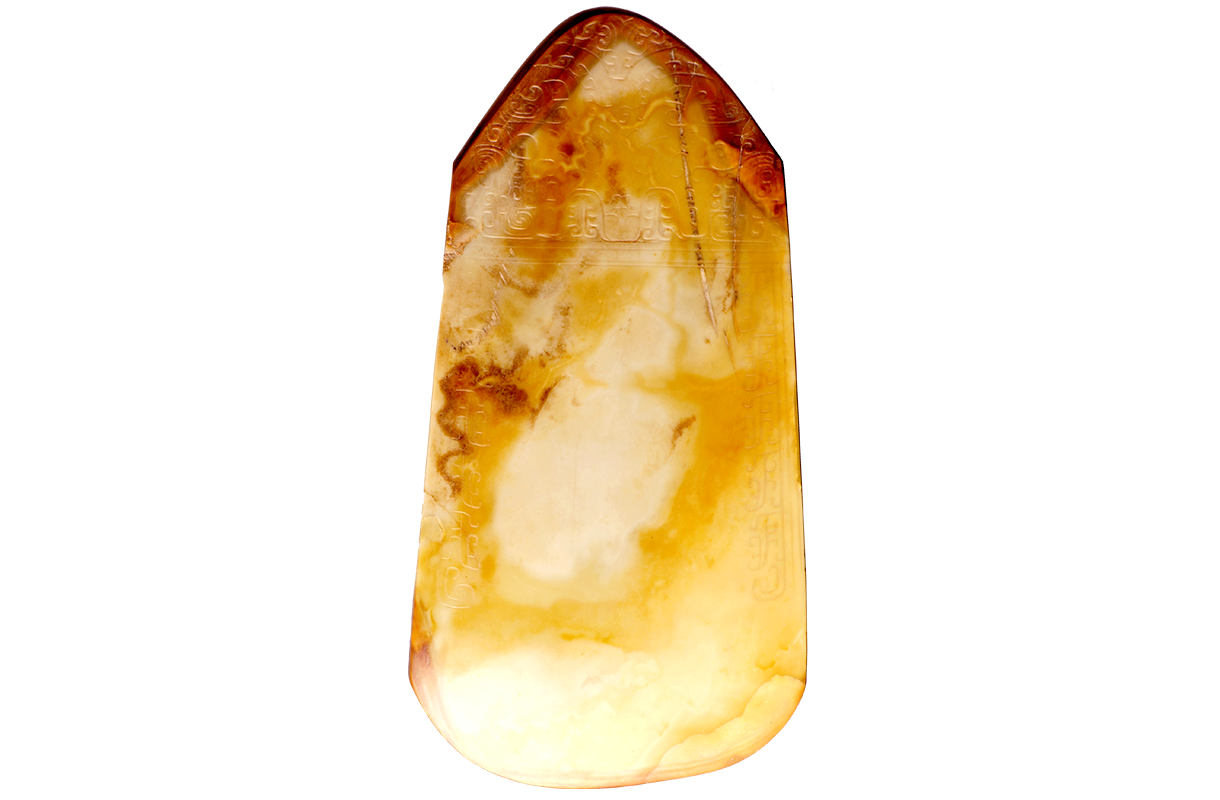Jade Yue-Axe with Animal-Face Pattern

Length 22.5 cm, width 11.48 cm, thickness 1.72 cm
Made of tremolite jade, the opaque artifact is grayish-white with multicolored stains (including tones of sauce yellow, gray black, dark brown, and muted brown). Shaped like a trapezoidal axe with a slightly triangular top, both faces are decorated with symmetrical motifs. At the top, a shallow, bas relief continuous beast face pattern is incised using material removal and line engraving techniques; beneath it, two parallel straight line patterns are carved, forming a distinct decorative unit. The upper body and both lateral edges are adorned with two sets of patterns—each formed by a pair of incised parallel lines creating a "冂" shaped design, within which five groups of symmetrical cloud motifs are further incised. Noticeable tool marks indicate the use of sharply edged instruments in the carving process. Although the jade originated from the western mountainous area of the Sichuan Basin and was produced locally, the beast face motif is typical of bronze vessels in central China during the Shang and Zhou dynasties. It holds significant historical, artistic, and scientific value for studying the jade processing techniques and the bronze civilization of the ancient Shu people in the Chengdu region during the Shang and Zhou dynasties.